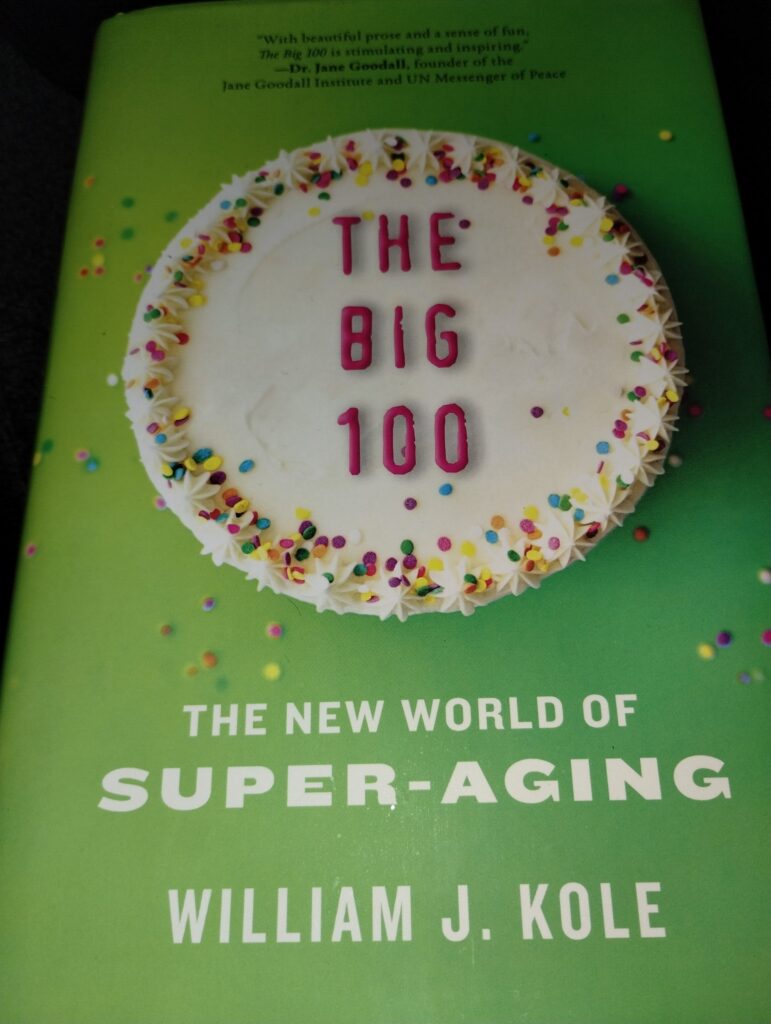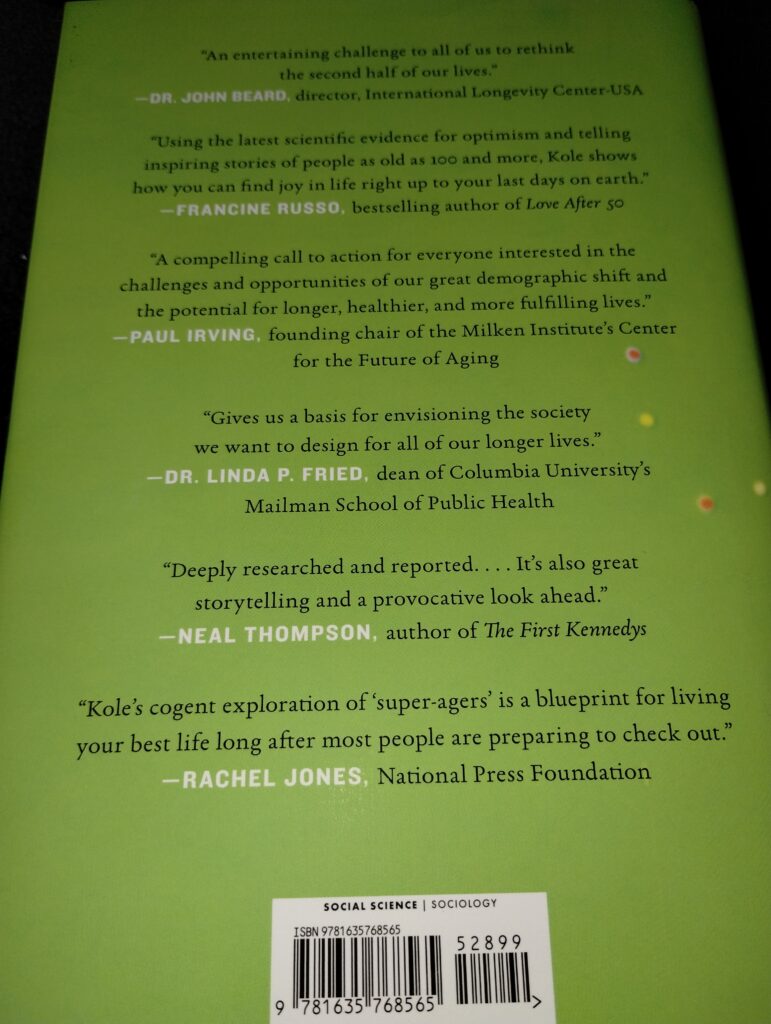Inside this post is my affiliate links. If you click on the links and make a purchase I will make a small percentage from the items you purchase.

I would like to share a new book I’ve been reading this week The Big 100: The New World of Super-Aging by William J. Kole. Check out the press release here: I received a copy of the physical book in exchange for this review. I would like to ask you to check out the Press Release here:
The Big 100: The New World of Super-Aging offer us predictions you may or may not have heard of but the story covers more than predictions. Did you know five-year old’s will most likely live to the age of 100? Can you imagine that? The world over is in the midst of a longevity revolution. f you’ve listened to news on the aging population, 2030 will be a turning point in demographics for the US.
In 2030, one in five people will be a boomer, older than 65 years, and in 2034, they will outnumber children. An interesting historical fact, of which there are many inThe Big 100: The New World of Super-Aging. Benjamin Franklin was an avid anti-vaxer. This was before his four-year old son died of Smallpox.
The author goes through a short history of vaccines and discoveries that has aided in lengthening our lives. The Big 100: The New World of Super-Aging book will be enlightening while other parts of the book will be frightening. Yet, mankind continues to find ways to keep us alive. We all should take heed and prepare to stay healthy which will help us live longer.
The Big 100: The New World of Super-Aging provides a wide range of interesting information, which depending on who is reading the book could be exciting or alarming. The Big 100: The New World of Super-Aging. challenged me to change my own perspective as a 68 years “young” person. and to ask David and Charlie to read the book and see if there was things they wanted to change.
As a mom who is going to turn 60 sooner than later I would like to see my son grow up and I would like for David to be here with us. With his heath I am not sure David will even live until his 70’s while his parents are knocking on 8o and nothing is stopping them from reaching there 100s.
The Big 100: The New World of Super-Aging offers us solutions for both old and experienced folks as well as for the young who someday will reach there 30, 40 and yes, even 50 and if the LORD is willing the 100’s giving them the opportunity to see there great grandchildren grow up.
About:
“Stimulating and inspiring. . . .” —Dr. Jane Goodall, founder of the Jane Goodall Institute & UN Messenger of Peace
Journalist William J. Kole, reluctant but newly minted member of AARP, explores the looming era of super-aging—incredibly longer lifespans overall, and eight times more centenarians by the year 2050—through the lens of past, present, and future life at ages 50, 65, 80, and on to 100-plus. What happens to all of us when 65 is merely a life half-lived?
By 2050, the world’s centenarian population—those aged 100 or more—will increase eightfold. Half of today’s 5-year-olds can expect to reach the same heights. It’s going to upend everything we thought we knew about health care, personal finance, retirement, politics, and more. Whether we’re 18 or 81, this tectonic demographic shift will affect us all.
The Big 100 confronts readers with both the brightness and potential bleakness of a fate few of us thought possible. Journalist William Kole guides us on this journey into our future, an optimistic but sometimes fraught exploration of super-aging as the grandson of a centenarian.
Along the way, there are expert sources, like Dr. Jane Goodall, longevity expert Dr. Thomas Perls, Senator Elizabeth Warren, and even 101-year-old influencer and fashionista Iris Apfel; along with surprises, including the truth about those so-called “Blue Zones” everyone thinks are centenarian factories. (Spoiler alert: They’re not.)
And there’s the troubling truth that those reaching extreme longevity tend to be overwhelmingly white, a product of what experts deem the “weathering theory”: the idea that the health of African Americans begins to deteriorate in early adulthood as a physical consequence of socio-economic disadvantages.
How long can we live? How long should we live? And what happens when 65 is merely a life half-lived? The Big 100 explores the most pressing questions of our super-aging future, and offers a glimpse of a reality that awaits us, our children, and our grandchildren.
About the author: William J. Kole

I’m William J. Kole, a veteran reporter, editor, and foreign correspondent, and my first book will be released this autumn.
THE BIG 100, coming Oct. 3 from Diversion Books, is an exploration of extreme longevity. We’re all hurtling into a new era of super-aging, and demographers forecast that the number of people living to 100 — or in some cases well beyond — will increase eightfold by 2050. Centenarians are the fastest-growing segment of the population.
It’s going to upend everything we thought we knew about retirement, personal finance, health care, and politics. Whether we’re 18 or 81, this tectonic demographic shift will affect us all. And worryingly, we’re not even close to being prepared.
I was literally wired for this work: My grandmother was born in 1899 and died in 2003, just shy of her 104th birthday, after a life that touched parts of three centuries. And while based in Paris for The Associated Press, I told the world about Jeanne Calment, the oldest person who ever lived whose age can be authenticated by records. She made it to 122. Who knows? Maybe you’ll be next.
Thank you,
Glenda, Charlie and David Cates